Guest blog from Terkel.io
Recruiters, what is one tip for developing a candidate persona?
To help you develop effective candidate personas, we asked recruiting professionals and CEOs this question for their best tips. From focusing on the must-have factors to including conscientiousness, there are several tips to help recruiters develop and define strong candidate personas.
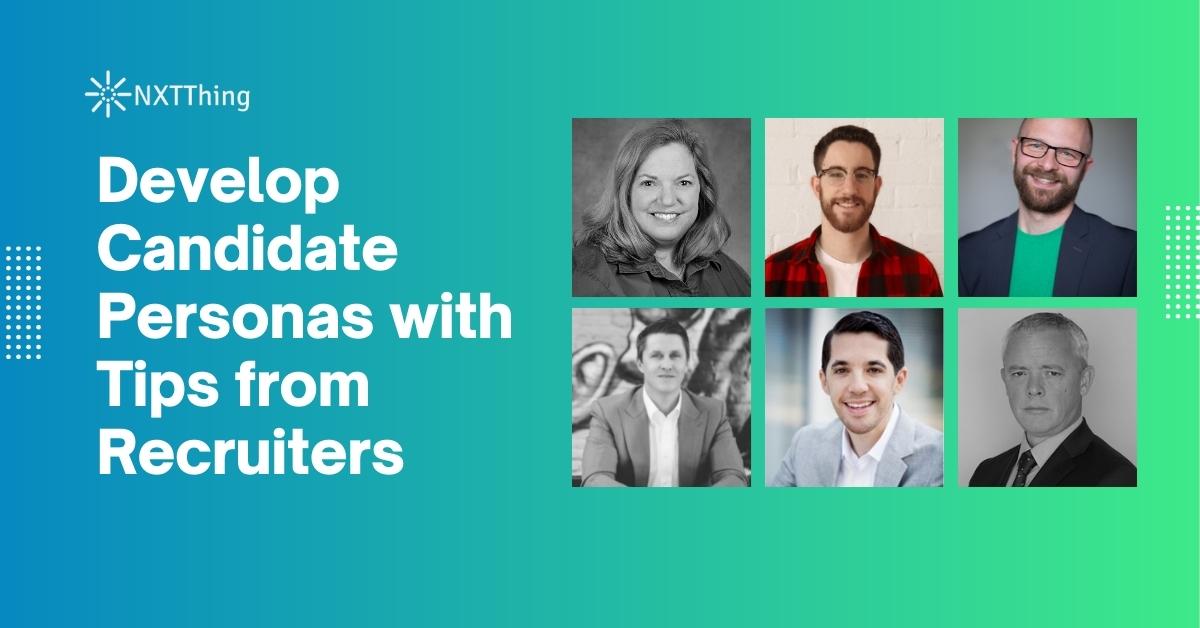
Here are eight tips for developing candidate personas:
- Focus on the Must-have Factors
- Highlight Skills and Culture
- Use a Before/After Grid
- Involve Your Team
- Be Flexible in Your Persona Development
- Do Your Research
- Note the Unique Qualities of a Role
- Include Conscientiousness in Your Candidate Persona
Focus on the Must-have Factors
A good candidate persona describes the target candidate’s background and work experience, their motivations, personality traits, and career goals. These all play a role in how well they will perform in their new role.
So what can you do to develop a strong candidate persona? Well, first start by considering all of the criteria that are most important for this role. For example, you might have different requirements for candidates who have advanced degrees than those who have only a high school degree.
Then think about each of those bases separately — an advanced degree versus a high school degree — and what kind of information would help you understand them better: for example, education level versus professional experience. Use that information to create your candidate persona.
Finally, use a persona to get feedback from current employees who might be interested in this role, so that you can adjust it over time as needed.
Peter Bryla, Outreach Marketing Specialist at ResumeLab
Highlight Skills and Culture
A candidate persona is a very helpful tool for clarifying what you want from new hires, but it can also be a source of implicit bias if you’re not careful in how you define your ideal candidate. This starts with leaving age, gender and other personal details out of the equation. You should also be cautious when defining things like educational institutions your ideal candidate attended — a potential source of bias if it introduces socio-economic limits on candidates — and be mindful of the implications of descriptive terms to avoid using gendered or otherwise biased language.
Jon Hill, Chairman & CEO of The Energists
Use a Before/After Grid
Whenever I create a candidate persona, I care less about the demographics of the person and more about what they’re thinking, feeling or where they want to be in the future. When I start seeing things from their perspective, it allows me to create messaging points that resonate with the intended audience. And I get there by using a before/after grid.
To create a before/after grid, you ask yourself questions about the “before” state of a candidate — when they work for someone else — and the “after” state of a candidate: when they work with you. Examples of these questions are: What does this candidate have — or not have — because of their current job? What will they gain or lose by joining us? What does this candidate feel before joining us, and what do they feel after?
A before/after grid is a valuable tool to understand candidates and create messaging that causes those candidates to see themselves working for your company.
Justin Vajko, Principal & Chief Strategy Guy at Dialog
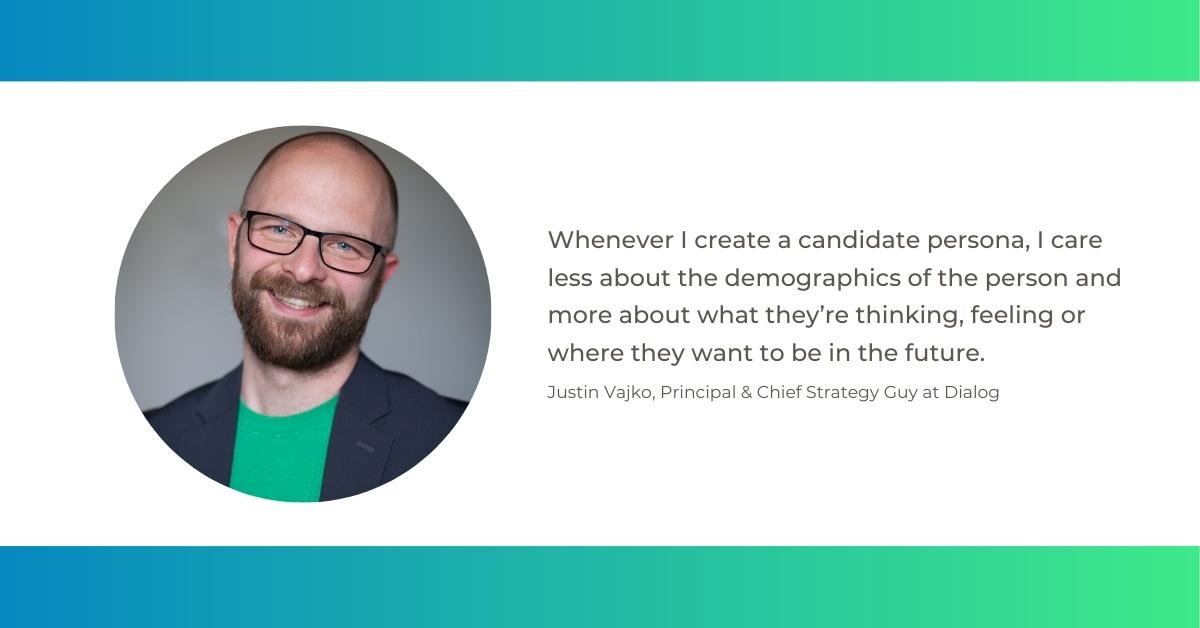
Involve Your Team
Every person has their own version of the ideal applicant for the role. When developing a candidate persona, do not only ask hiring authorities about their thoughts, but also the people who would be working closely with the new hire. Involving employees of all levels and departments is a holistic approach to determining what it takes to succeed in the role and company. After gathering all insights, assess which characteristics and skill sets should be required and which can be optional before conducting the hiring process.
Benjamin Farber, President of Bristol Associates, Inc.
Be Flexible in Your Persona Development
Developing a candidate persona — a representation of your ideal candidate for a role — can help attract the right candidate, improve time-to-hire, minimize turnover rates, boost offer-acceptance rates and minimize turnover. When developing a candidate persona, you want to keep in mind that this is an archetype of the perfect candidate, and that in the real world there is no perfect candidate.
Acknowledging this ensures that you don’t dismiss otherwise qualified candidates just because they do not tick all the boxes on your list of the ideal candidate. Give yourself some flexibility when evaluating a real-life candidate, as opposed to through the narrow lens of the candidate’s persona.
Joe Coletta, Founder and CEO of 180 Engineering
Do Your Research
Personas are a great way to understand your candidates and see the world from their perspective. By creating a persona, you can better understand the things that are important to them and how they think. Additionally, by understanding your candidates’ personas, you can better tailor your communication and recruitment methods. For example, if you want to hire an engineer, it is important to know the things that engineers like and dislike. What drives them and makes them tick at work? How do they like to work and how do they like to communicate?
Travis Lindemoen, Managing Director of nexus IT group
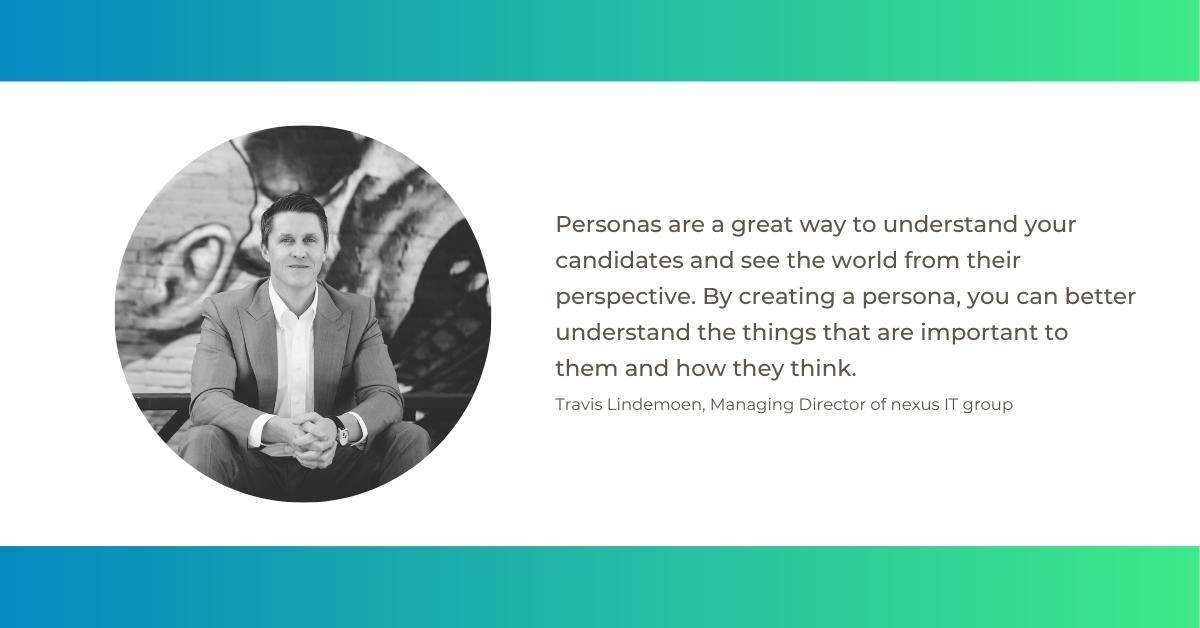
Note the Unique Qualities of a Role
Create unique perspectives of your open roles. This includes highlighting the leadership and growth opportunities that exist in the position. You need to detail everything that would make the role appealing to candidates. You should also describe how the company’s culture and values stand out from its competitors.
Dan Gray, General Manager of Kotn Supply
Include Conscientiousness in Your Candidate Persona
Every effective candidate persona should include conscientiousness as an important component. The level of conscientiousness reliably exhibited by an employee consistently predicts outstanding job performance, but employers often overlook this attribute in their recruiting processes. When creating a candidate persona, describe the types of conscientiousness specific to the role being sourced, and then assess this characteristic in the interview process. The best predictor of future conscientiousness is past conscientiousness, so the most competitive candidates should be able to describe specific ways in which they exhibited this quality in previous work experiences.
Janet Civitelli, Recruiter, Writer, and Workplace Psychologist
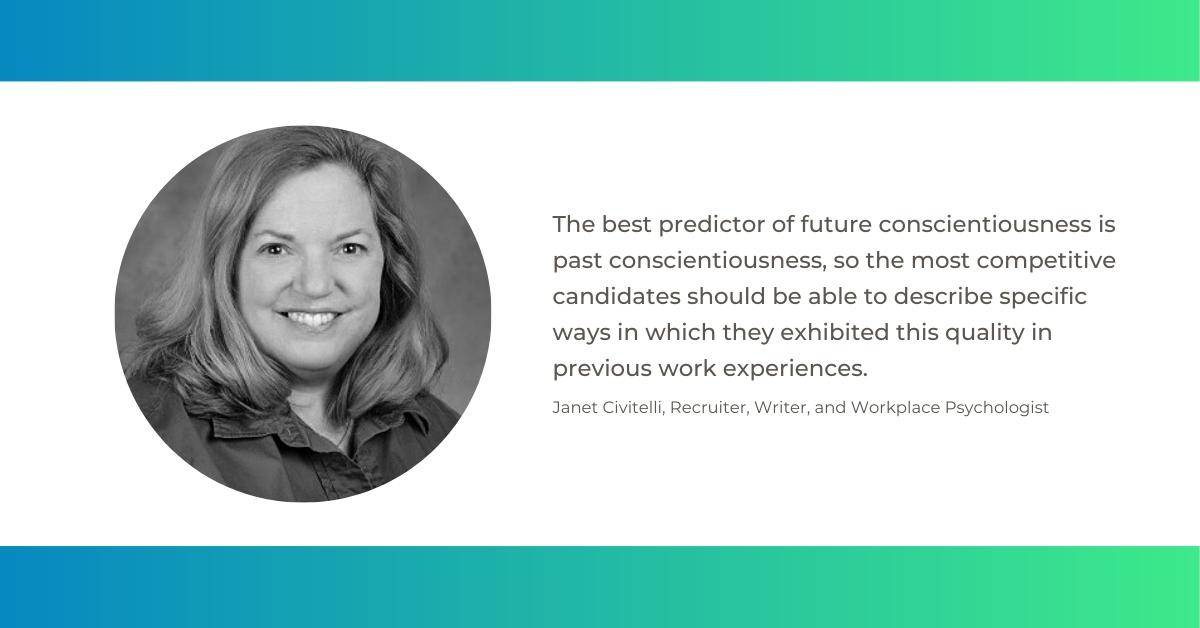
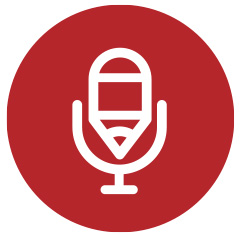
Terkel creates community-driven content featuring expert insights. Sign up at terkel.io to answer questions and get published.





